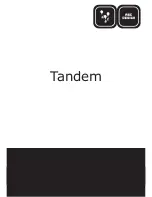
ifm
Supplementary device manual DeviceNet interface in the AS-i ControllerE (AC1318, AC1324), Target from 15
2012-02-29
Glossary of Terms
238
Self-test
Test program that actively tests components or
devices. The program is started by the user
and takes a certain time. The result is a test
protocol (log file) which shows what was tested
and if the result is positive or negative.
SELV
SELV =
S
afety
E
xtra
L
ow
V
oltage
Active parts of safety extra low voltage circuits
must neither be connected to ground nor to
protective wires of other circuits. They must be
safely separated from active parts with higher
voltage.
SELV circuit = secondary circuit (output
voltage) which is rated and protected so that
its voltages do not exceed a safe value in case
of correct operation (of the power supply) or in
case of a single fault (of the power supply).
SELV circuits are separated from the input
voltage (mains voltage) by double or enhanced
insulation. The voltage value must not exceed
60 V DC (or 42.4 V AC).
Single slave
Slave whose address number may only
occur once on the
master.
Slave
Passive participant on the bus, only replies on
request of the
master. Slaves have a clearly
defined and unique
address in the bus.
Slave configuration
The following terms need to be distinguished...
- AS-i projected configuration
(
PCD
(
→
page
)),
- AS-i current configuration
(
CDI
(
→
page
)),
- CTT projected configuration
(
PCCD
(
→
page
)),
- CTT current configuration
(
CCDI
(
→
)).
Symbols
Pictograms are figurative symbols which
convey information by a simplified graphic
representation.
Chapter
What do the symbols and formats
mean?
(
→
page
System variable
Variable to which access can be made via IEC
address or symbol name from the PLC.
T
Target
The target indicates the target system where
the PLC program is to run. The target contains
the files (drivers and if available specific help
files) required for programming and parameter
setting.
TCP
The
T
ransmission
C
ontrol
P
rotocol is part of
the TCP/IP protocol family. Each TCP/IP data
connection has a transmitter and a receiver.
This principle is a connection-oriented data
transmission. In the TCP/IP protocol family the
TCP as the connection-oriented protocol
assumes the task of data protection, data flow
control and takes measures in the event of
data loss. (compare:
UDP)
U
UDP
UDP (
U
ser
D
atagram
P
rotocol) is a minimal
connectionless network protocol which belongs
to the transport layer of the internet protocol
family. The task of UDP is to ensure that data
which is transmitted via the internet is passed
to the right application.
At present network variables based on CAN
and UDP are implemented. The values of the
variables are automatically exchanged on the
basis of broadcast messages. In UDP they are
implemented as broadcast messages, in CAN
as PDOs. These services are not confirmed by
the protocol, i.e. it is not checked whether the
message is received. Exchange of network
variables corresponds to a "1 to n connection"
(1 transmitter to n receivers).
Unit ID
Modbus






































